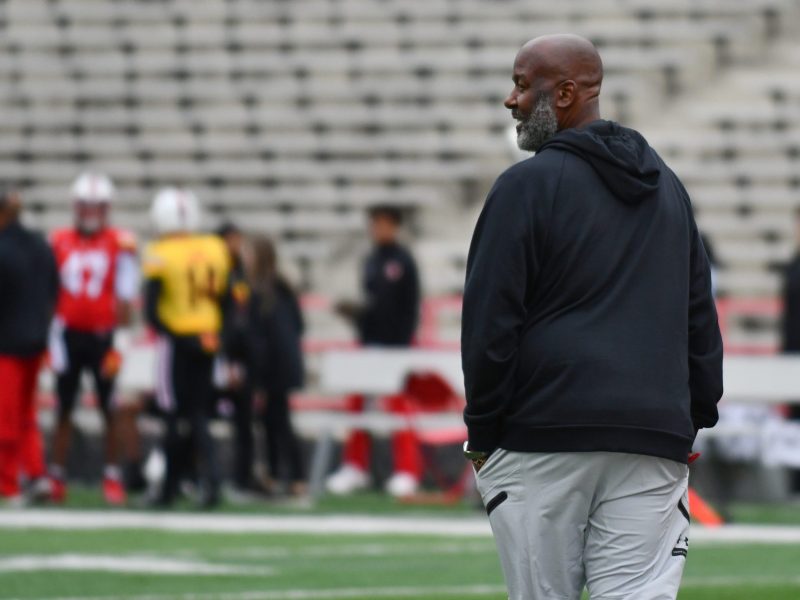Maryland football players have had a roller coaster of a summer. It began with voluntary, informal workouts and the unknowns of a pandemic hanging overhead. But as the weeks went on, the team received some clarity of its future — a 10-game, conference-only schedule beginning Sept. 5. And as the team donned its helmets for the first official preseason practice on Aug. 7, there was a sense of hope that, just maybe, things were returning to relative normalcy.
But that was not to be. Just four days after their first practice, the season ground to a halt when the Big Ten canceled fall sports.
“Tuesday was a rough day around here,” coach Mike Locksley said Thursday. “They’ve worked really hard over the last couple of months here, and for no fault of their own, football has been taken away from them.”
The first hint that the season was about to come crashing down came Saturday. The Big Ten barred padded practices until further notice, a major setback on just the second day of practice. Rumors about the season’s status swirled as the conference’s athletic directors convened to discuss how to proceed.
For Locksley, that was enough to halt formal workouts. After a scheduled day off Sunday, the Terps didn’t practice as planned Monday or Tuesday, instead waiting for a more definitive directive from the conference.
“I didn’t feel it was in our best interest as a program to put our players in harm’s way without knowing the direction that we were going to go as a conference,” Locksley said.
[Big Ten announces postponement of all fall sports]
After the formal decision came Tuesday afternoon, the question then became whether the Big Ten would try to hold a 2020-21 season at all. In its statement, the conference left open the possibility of playing a football schedule in the winter or spring, potentially forcing two seasons in one calendar year.
No one is quite sure what that plan would look like right now, but it could cause significant issues for Maryland’s athletes. A typical season already proves grueling enough. Sandwiching two campaigns in 12 months is all the more daunting.
Beyond that, players with NFL aspirations may have a decision to make, with the draft set to take place in April — potentially in the midst of the spring season.
Locksley is optimistic, though. The second-year coach said he believes the Big Ten will be able to pull off such a schedule with little risk to the players.
“I’ve been really pleased with knowing that it is definitely feasible to do it while also keeping players’ safety and health in the forefront of it and not playing too many games in one calendar year,” Locksley said. “I feel good about the way that infrastructure looks, and I anticipate us being able to pull it off.”
[Seven players opt out of Maryland football’s season, including QB Josh Jackson]
So, what’s next for Locksley and the Terps? A lot of waiting.
The NCAA is still determining how player opt-outs and the changes in schedules will impact eligibility, and the Big Ten is figuring out how teams will be able to practice in the near-term. Locksley said he anticipates his team will be able to run workouts similar to the summer — conditioning, weight room time and individual skills work — but with greater coach supervision.
Still, Maryland is facing an uncertain next few months.
However, it’s par for course for the coronavirus pandemic — one that’s touched every aspect of society, including collegiate athletics.
Regardless, Locksley said he is confident his team will be able to tackle whatever comes its way.
“We’ll be prepared to make adjustments as we see fit and hopefully begin preparation here,” Locksley said.



